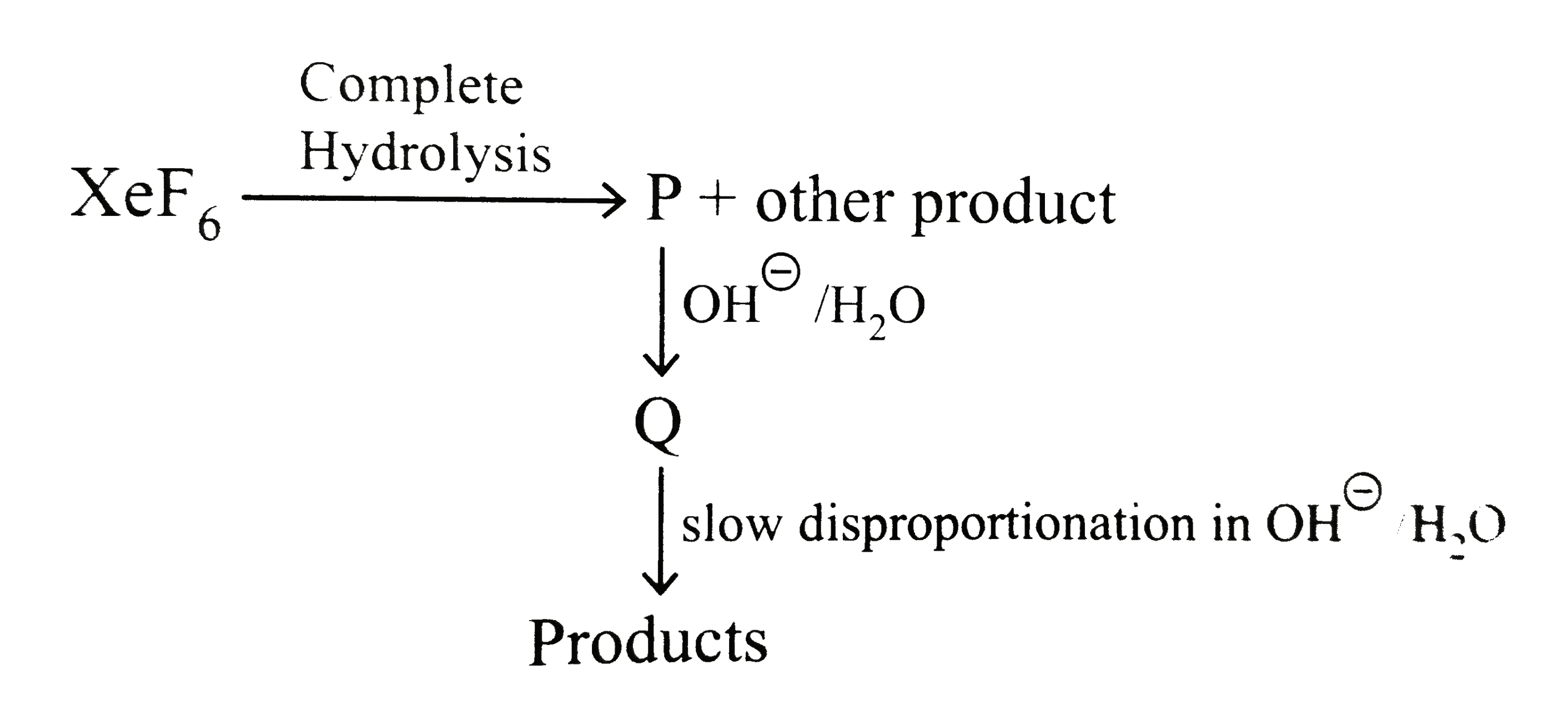Complete Solutions to EXERCISE-3 PART-1 of chapter P-BLOCK ELEMENTS (HALOGEN & NOBLE GASES) of Class 12 book with complete answers and questions
| Class 12 | CHEMISTRY |
| Chapter | P-BLOCK ELEMENTS (HALOGEN & NOBLE GASES) |
| RESONANCE NEW | EXERCISE-3 PART-1 |
| Number Of Questions | 12 |
| Academic Year | 2023-24 |
Give an example of oxidation of halide by another halogen. Explain the feasibility of the reaction.
03:52View SolutionThe set with correct order of acidity is :
04:01View SolutionThe reaction `3ClO^(-)(aq)rarrClO_(3)^(-)(aq)+2Cl^(-)(aq)` an example of :
02:09View SolutionA gas X is passed through water to form a saturated solution. The aqueous solution on treatment with silver nitrate gives a white precipitate. The saturated aqueous solution also dissolves magnesium ribbon with evolution of a colourless gas Y. Identify X and Y.
03:22View SolutionThe noble gases have closed-shell electronic configuration and are monoatomic gases under normal conditions. The low boiling points of the lighter noble gases are due to weak dispersion forces between the atoms and the absence of other Interatomic Interactions.
The direct reaction of xenon with fluorine leads to a series of compounds with oxidation numbers +2,+4 and +6. `XeF_4` reacts violently with water to give `XeO_3` The compound of xenon exhibit rich stereochemistry and their geometries can be deduced considering the total number of electron pairs in the valence shell.
Argon is used In arc welding because of its:01:30View SolutionThe noble gases have closed-shell electronic cordigaration and are monatomic gases under normal condition .The low bolling points of the ligher noble gases aree due to the weak dispersion points of the ligher noble gases an due to the weak dispersion forces between the atoms and the alsence of other interalumic interactions.
The direct reaction of xenon with flarine loads to a series of compounds with water oxidation number `+2, - 4 and +6, XeF_(4)` reactsviolenatly with water to give `XeO_(2)` .The compound of deduced axbibt nci strouchemistry and their goometries can be deduced considering the total number of electron puirs in the valence shell.
The structure of `XeO_(3)` is02:10View SolutionThe noble gases have closed-shell electronic configuration and are monoatomic gases under normal conditions. The low boiling points of the lighter noble gases are due to weak dispersion forces between the atoms and the absence of other Interatomic Interactions.
The direct reaction of xenon with fluorine leads to a series of compounds with oxidation numbers +2,+4 and +6. `XeF_4` reacts violently with water to give `XeO_3` The compound of xenon exhibit rich stereochemistry and their geometries can be deduced considering the total number of electron pairs in the valence shell.
`XeF_4` and `XeF_6` are expected to be:01:21View SolutionAll the compounds listed in column I react with water. Match the result of the respective reactions with the appropriate options listed in column II.
 View Solution
View SolutionThe reactions of `CI_(2)` gas with cold-dilute and hot-concentrated NaOH in water give sodium salts of two different oxioacids of chlorine, P and Q, respectively. The `CI_(2)` gas reacts with `SO_(2)` gas, in presence of charocal, to give a product R reacts with white phosphorus to give a compound S. On hydrolysis, S gives an oxoacid of phosphorus.
P and Q, respectively, are the sodium salts of02:46View SolutionThe reactions of `CI_(2)` gas with cold-dilute and hot-concentrated NaOH in water give sodium salts of two different oxioacids of chlorine, P and Q, respectively. The `CI_(2)` gas reacts with `SO_(2)` gas, in presence of charocal, to give a product R reacts with white phosphorus to give a compound S. On hydrolysis, S gives an oxoacid of phosphorus.
R, S and T, respectively, are03:26View SolutionThe unbalanced chemical reactions given In list I show missing reagent or condition (?) Which are provided in List II. Match List I with List II and select the correct answer using the code given below the list:
 01:24View Solution
01:24View SolutionUnder ambient condition , the total number of gases released products in the final step of the reaction scheme shown below is
 02:31View Solution
02:31View Solution
EXERCISE-3 PART-1 questions and complete solutions for chapter P-BLOCK ELEMENTS (HALOGEN & NOBLE GASES) of PHYSICAL, INORGANIC, AND ORGANIC CHEMISTRY of Class 12
